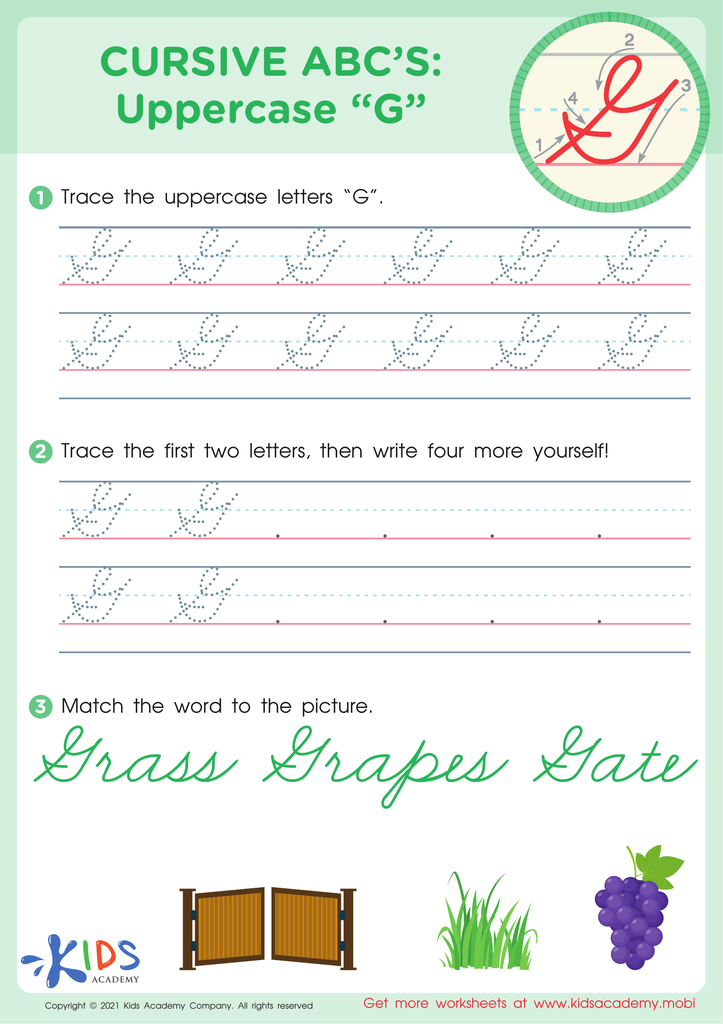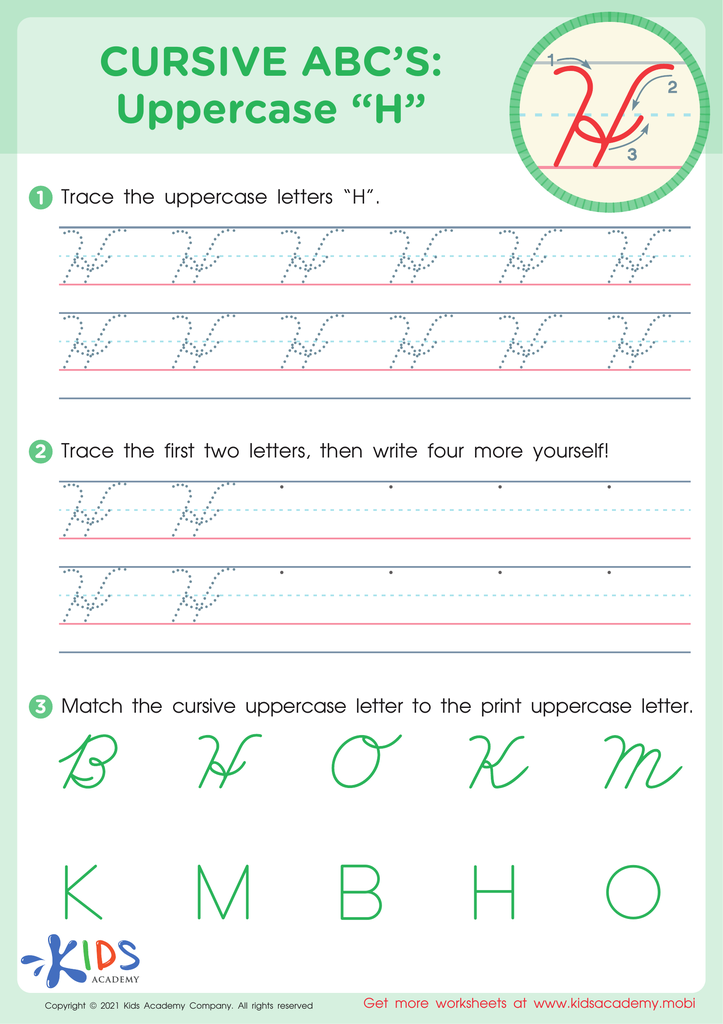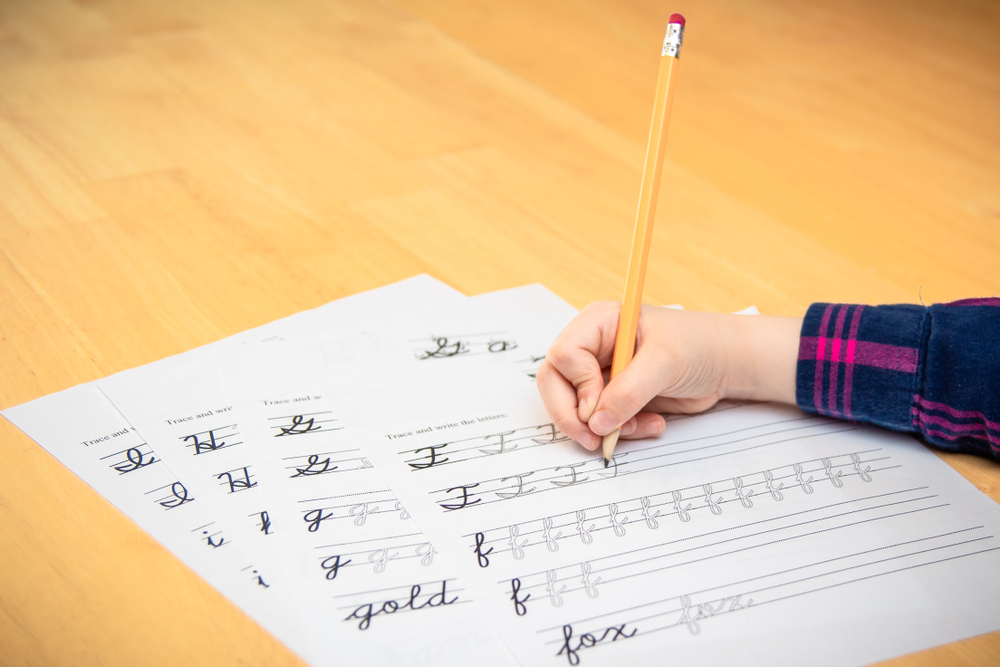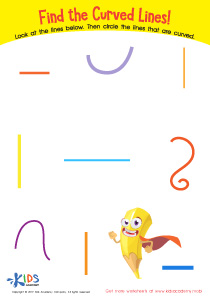Alphabet Recognition Cursive Alphabet Worksheets for Ages 6-8
7 filtered results
-
From - To
Discover our "Alphabet Recognition Cursive Alphabet Worksheets for Ages 6-8" designed to enhance your child’s cursive writing skills while they master the alphabet. These engaging worksheets from Kids Academy help kids confidently recognize and write each cursive letter from A to Z. Tailored for young learners, these thoughtfully created worksheets ensure that your child develops essential handwriting skills through fun and interactive exercises. Perfect for practice at home or in the classroom, our printables make learning cursive enjoyable and effective. Promote your child's educational growth with our high-quality resources developed by experts! Download today!


Cursive ABCs: Lowercase d


Cursive ABCs: Uppercase E


Cursive ABCs: Uppercase G


Cursive ABCs: Lowercase c


Cursive ABCs: Lowercase b


Cursive ABCs: Uppercase A


Cursive ABCs: Uppercase H
Parents and teachers should care about alphabet recognition and the cursive alphabet for children ages 6-8 because these skills are foundational to literacy and effective communication. During these crucial early years, kids typically develop key cognitive and fine motor skills that are important for writing. Learning to recognize the alphabet in cursive script can significantly enhance their ability to read and write, equipping them with a versatile skill set.
Cursive writing positively impacts brain development by stimulating different regions of the brain responsible for thinking, language, and working memory. This type of writing requires children to use their hands in more intricate ways, which can help improve hand-eye coordination and fine motor skills.
Mastering cursive handwriting can also boost a child's confidence and academic performance. Writing fluently in cursive can be less tiring than printing because it involves smoother, more continuous strokes. This ease can promote faster writing and lessen hesitation during note-taking and examinations.
Additionally, learning both print and cursive alphabets exposes children to varied textual forms they will encounter in their education and daily life, thus enhancing their overall literacy. It prepares them for more complex reading and writing tasks ahead, solidifying a crucial life skill that fosters success in school and beyond.
















